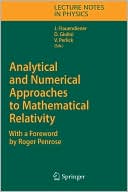
Analytical and Numerical Approaches to Mathematical Relativity PDF
288 Pages·2006·4.1087 MB·other
Most books are stored in the elastic cloud where traffic is expensive. For this reason, we have a limit on daily download.
Preview Analytical and Numerical Approaches to Mathematical Relativity
Description:
The general theory of relativity, as formulated by Albert Einstein in 1915, provided an astoundingly original perspective on the physical nature of gr- itation, showing that it could be understood as a feature of a curvature in the four-dimensional continuum of space-time. Now, some 90 years later, this extraordinary theory stands in superb agreement with observation, prov- ing a profound accord between the theory and the actual physical behavior of astronomical bodies, which sometimes attains a phenomenal precision (in one case to about one part in one hundred million million, where several d- ferent non-Newtonian e?ects, including the emission of gravitational waves, are convincingly con?rmed). Einstein’s tentative introduction, in 1917, of an additional term in his equations, speci?ed by a “cosmological constant”, - pearsnowtobeobservationallydemanded,andwiththistermincluded,there is no discrepancy known between Einstein’s theory and classical dynamical behavior, from meteors to matter distributions at the largest cosmological scales. One of Einstein’s famous theoretical predictions that light is bent in a gravitational ?eld (which had been only roughly con?rmed by Eddington’s solareclipsemeasurementsattheIslandofPrincipein1919,butwhichisnow very well established) has become an important tool in observational cosm- ogy, where gravitational lensing now provides a unique and direct means of measuring the mass of very distant objects.
See more
The list of books you might like
Most books are stored in the elastic cloud where traffic is expensive. For this reason, we have a limit on daily download.
